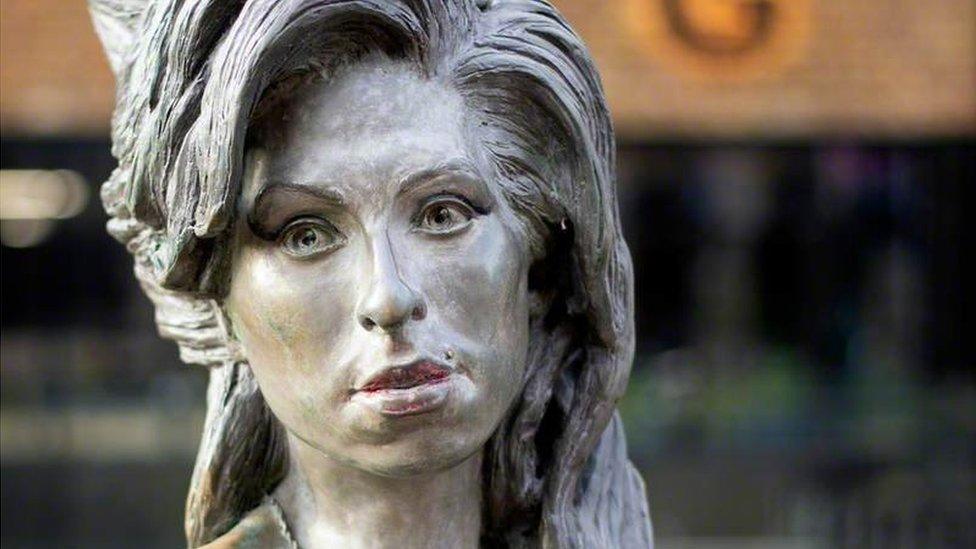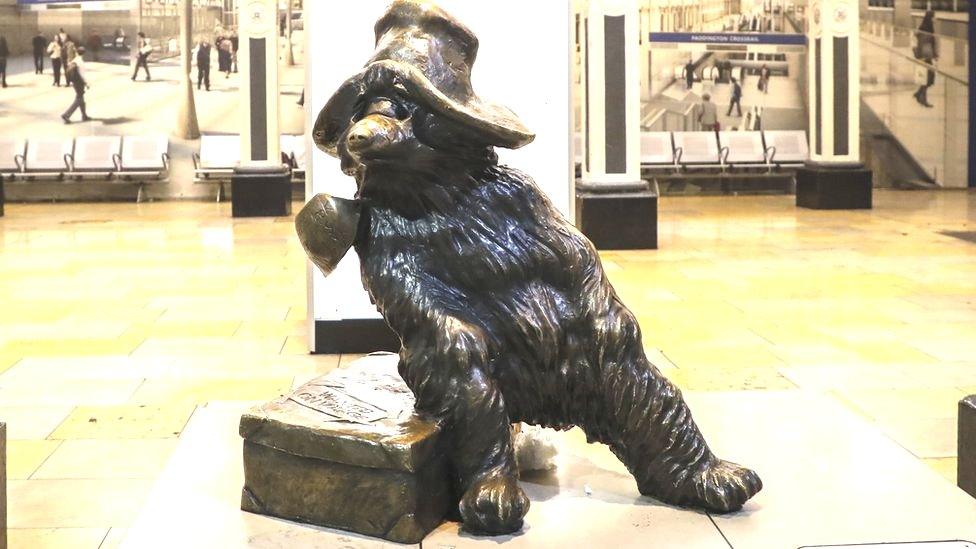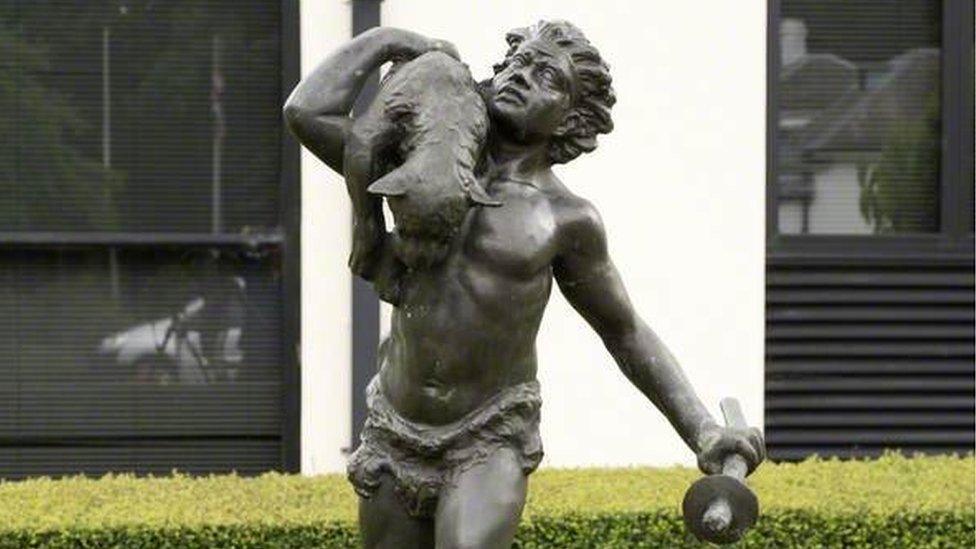London has twice as many statues of animals as named women
- Published

Amy Winehouse is one of the few non-royal women depicted in statue form in the capital
There are more statues of animals in London than of named women, an audit by Art UK has found.
There are about 1,500 monuments in the capital. Fifty of those depict specific women while nearly 100 are of animals.
There are also only three statues dedicated to non-white women, leading mayor Sadiq Khan to say there was an "urgent need" to improve diversity in the city's public spaces.
City Hall has announced it will provide £1m for new, more inclusive artwork.
This "Untold Stories" fund will be overseen by a "diversity in the public realm commission" and will allow community-led organisations to bid for funding to refresh their public spaces.
The commission was announced last year after the toppling of a statue of slave trader Edward Colston in Bristol sparked a national debate about how Britain's history is remembered.

Women are outnumbered by a cavalcade of creatures, including lions, horses and a marmalade-loving bear

Statuesque women
There are 19 monuments and statues in the capital dedicated to queens of England: Nine of Queen Victoria, four of Queen Elizabeth II and three of Queen Anne.
Nurses Mary Seacole, Florence Nightingale and Edith Cavell each have a statue.
Seacole, who was Jamaican-Scottish, is one of a handful of women of colour who have a statue. Noor Inayat Khan, an SOE agent who infiltrated occupied France during the World War Two, is another. She was captured and executed at Dachau Concentration Camp.
Statues in the pipeline include one of double Olympic champion boxer Nicola Adams.


There are about 1,500 monuments in the city
Mr Khan has stressed that the board will not be presiding over the removal of statues, but it may lead to "new ideas" being considered for some of the capital's street names.
He said: "London's diversity is its greatest strength but for far too long our capital's statues, street names and buildings have only shown a limited perspective on our city's complex history.
"I'm determined to do everything I can to ensure our public realm presents a more complete picture of everyone who has made London the incredible city it is today."